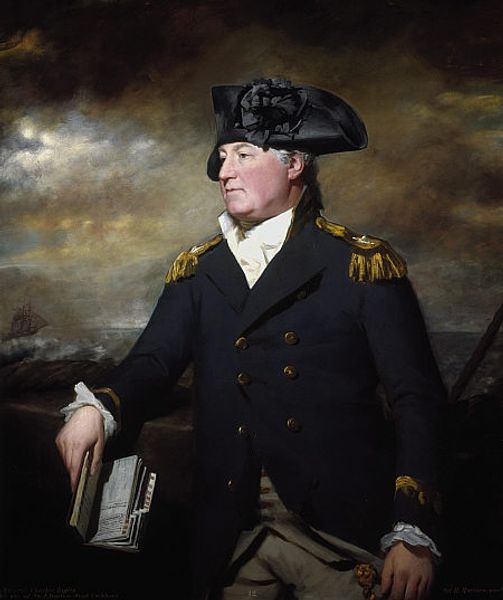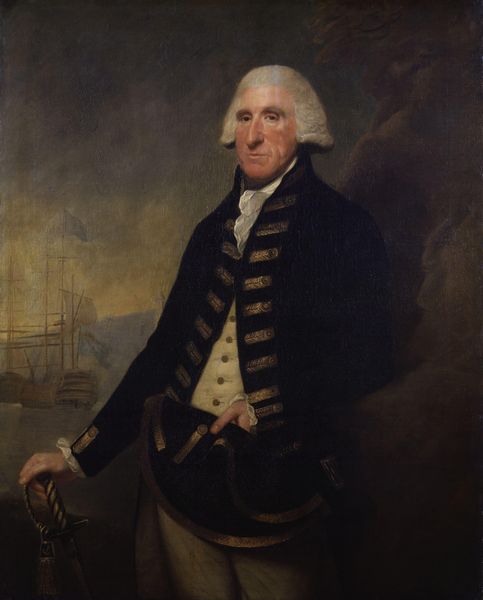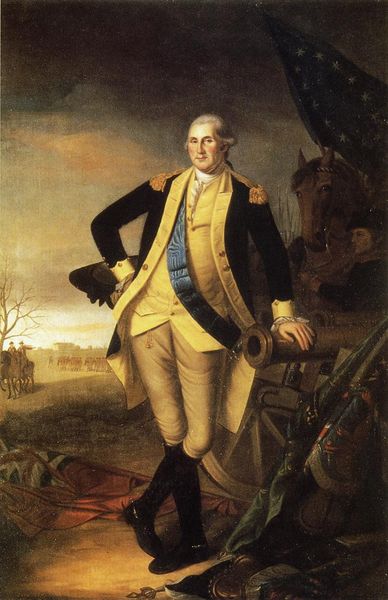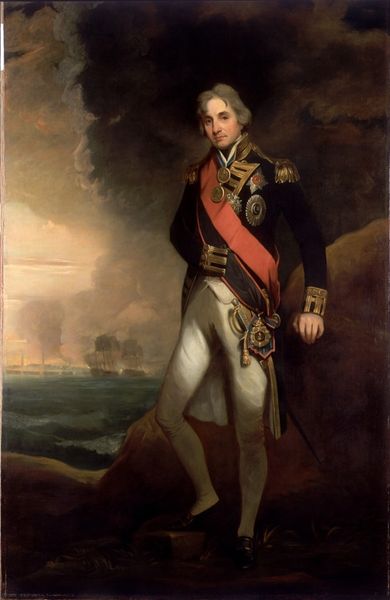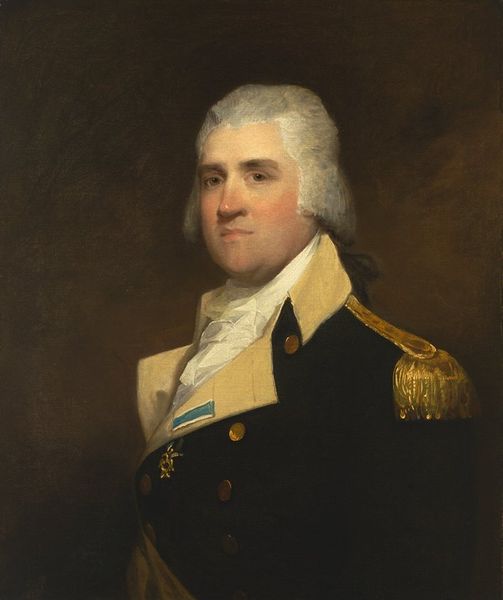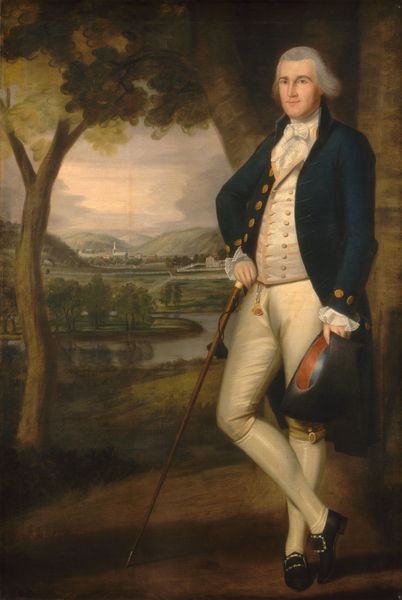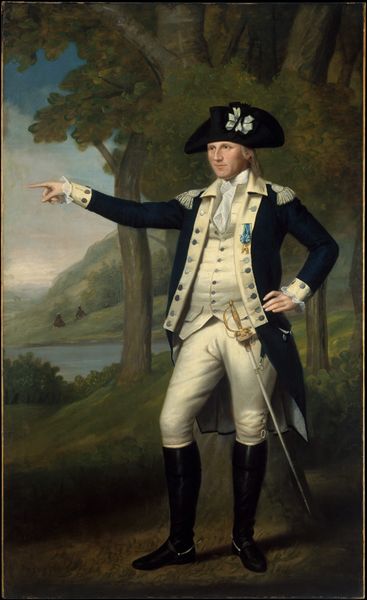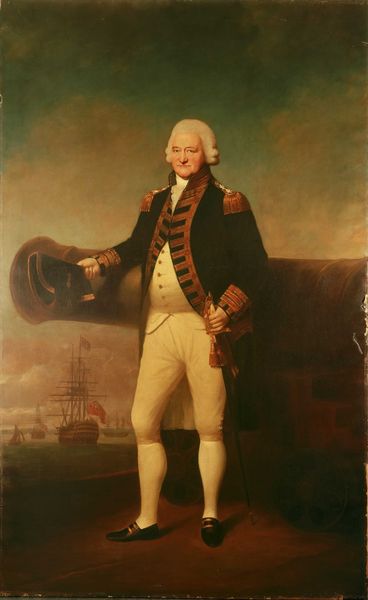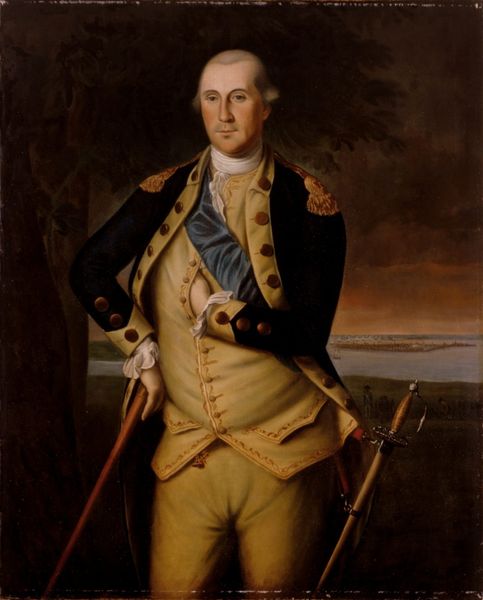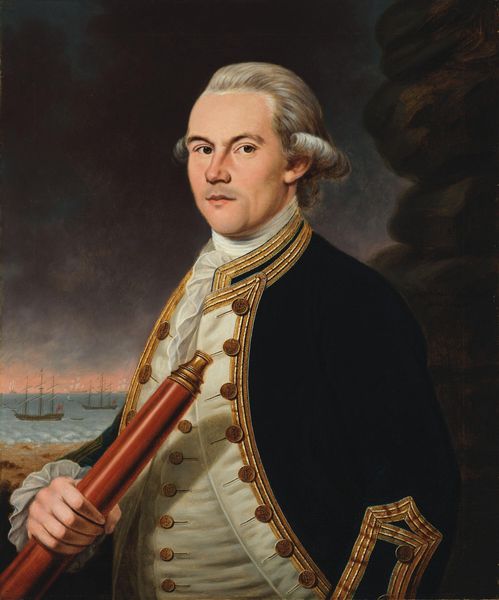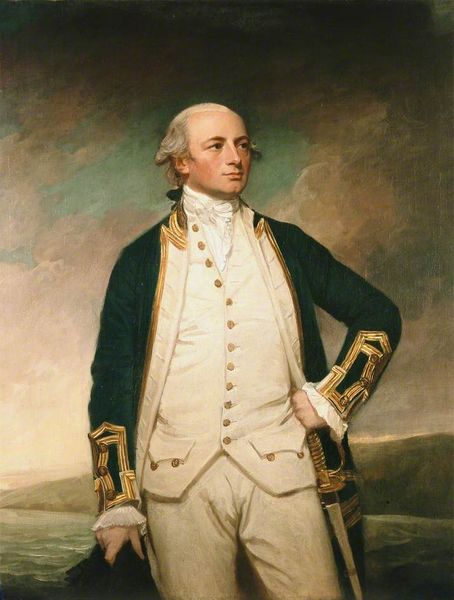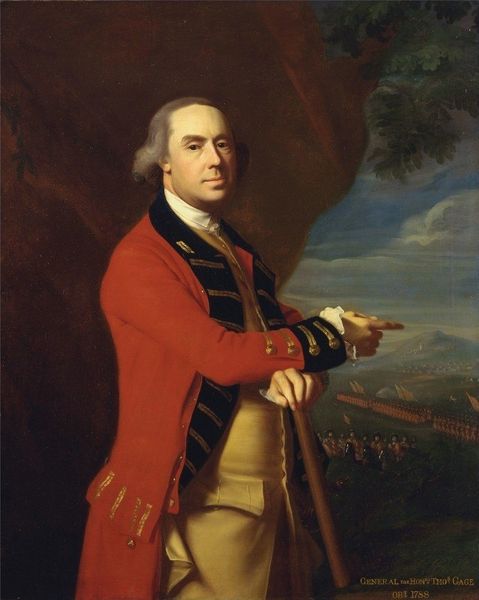
painting, oil-paint
#
portrait
#
baroque
#
painting
#
oil-paint
#
history-painting
#
academic-art
#
realism
Dimensions: 127 x 101.5 cm
Copyright: Public domain
Editor: Here we have Joshua Reynolds' "Commodore the Honorable Augustus Keppel," painted in 1749 using oil on canvas. What strikes me is the commodore's gaze, quite determined. But I'm also drawn to the rough background contrasting with the details of his uniform. How would you interpret the contrast? Curator: Notice how Reynolds constructs Keppel's image not just with pigments and brushstrokes, but within a system of patronage and maritime power. Consider the context of the Royal Navy at the time. Reynolds used oil paints, which became standard precisely because they allowed artists to create convincing representations of material wealth, social standing, and, in this case, naval prowess. Editor: So the very materiality is linked to the commodore’s position? Curator: Exactly. The sheen of the uniform, achieved through careful layering of oil paint, serves as a visual indicator of status, achieved and reinforced by the exploitation of labor and material resources across the British Empire. Do you see that detail reflected anywhere else in the portrait? Editor: Maybe the ship in the background, subtly placed? It’s small but implies the network supporting his role. Were these portraits intended to do more than just represent someone’s likeness? Curator: Indeed. They were deeply enmeshed in power dynamics, celebrating the acquisition of capital, commodities, and colonial territories. These portraits served to solidify social hierarchies and promote certain narratives of success, reflecting the material realities of the era. Editor: It’s fascinating to consider how materials themselves become tools to display power. I’ll certainly think differently about the social role of portraits going forward. Curator: Thinking about the conditions and production process behind artworks helps to open up new avenues for considering them.
Comments
No comments
Be the first to comment and join the conversation on the ultimate creative platform.
